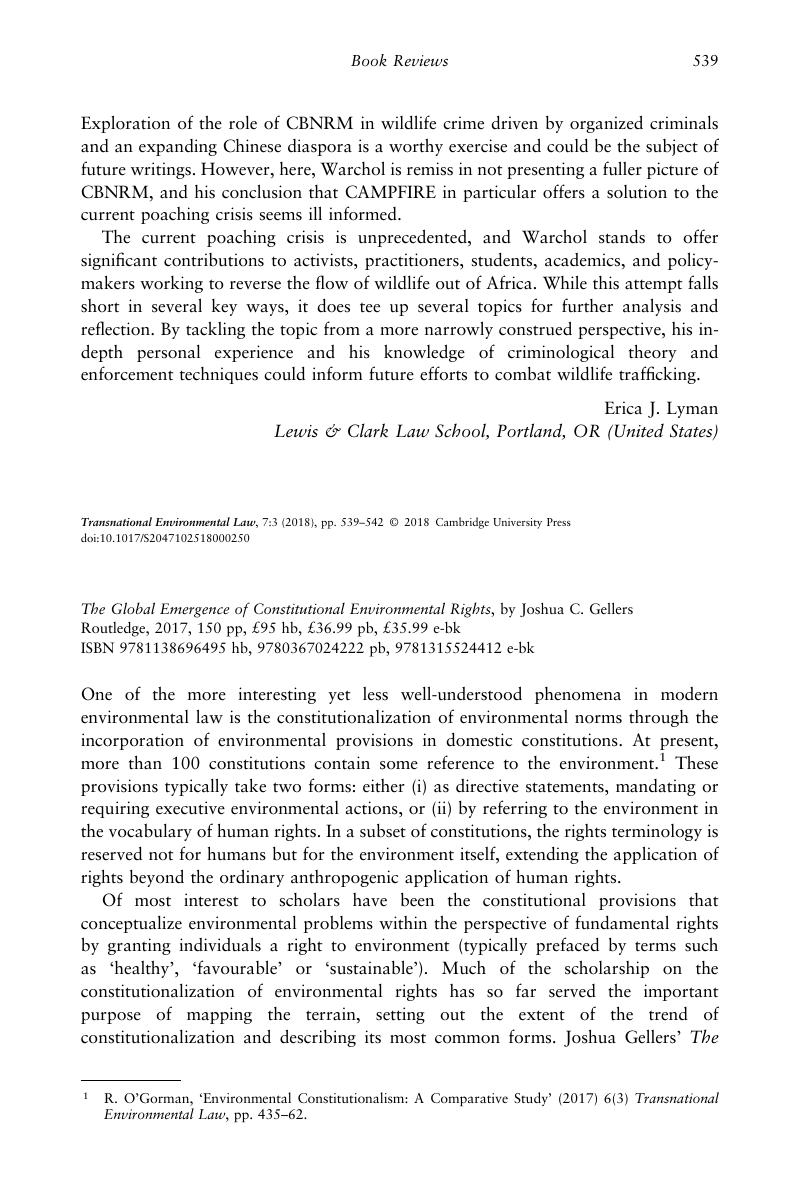No CrossRef data available.
Article contents
The Global Emergence of Constitutional Environmental Rights, by Joshua C. Gellers Routledge, 2017, 150 pp, £95 hb, £36.99 pb, £35.99 e-bk ISBN 9781138696495 hb, 9780367024222 pb, 9781315524412 e-bk
Published online by Cambridge University Press: 15 November 2018
Abstract

- Type
- Book Reviews
- Information
- Copyright
- © Cambridge University Press 2018
References
1 O’Gorman, R., ‘Environmental Constitutionalism: A Comparative Study’ (2017) 6(3) Transnational Environmental Law, pp. 435–462 CrossRefGoogle Scholar.
2 Ackerman, Citing B., ‘The Rise of World Constitutionalism’ (2007) 83(4) Virginia Law Review, pp. 771–797 CrossRefGoogle Scholar, at 771.
3 European Convention for the Protection of Human Rights and Fundamental Freedoms (ECHR), Rome (Italy), 4 Nov. 1950, in force 3 Sept. 1953, available at: http://www.echr.coe.int.
4 See, e.g., Pedersen, O.W., ‘The European Court of Human Rights and International Environmental Law’, in J. Knox & R. Pejan (eds), The Human Right to a Healthy Environment (Cambridge University Press, 2018), pp. 86–96 CrossRefGoogle Scholar.
5 A similar example emerges in the context of the Indian Supreme Court and the Indian Constitution.
6 Aarhus (Denmark), 25 June 1998, in force 30 Oct. 2001, available at: http://www.unece.org/env/pp/welcome.html.




